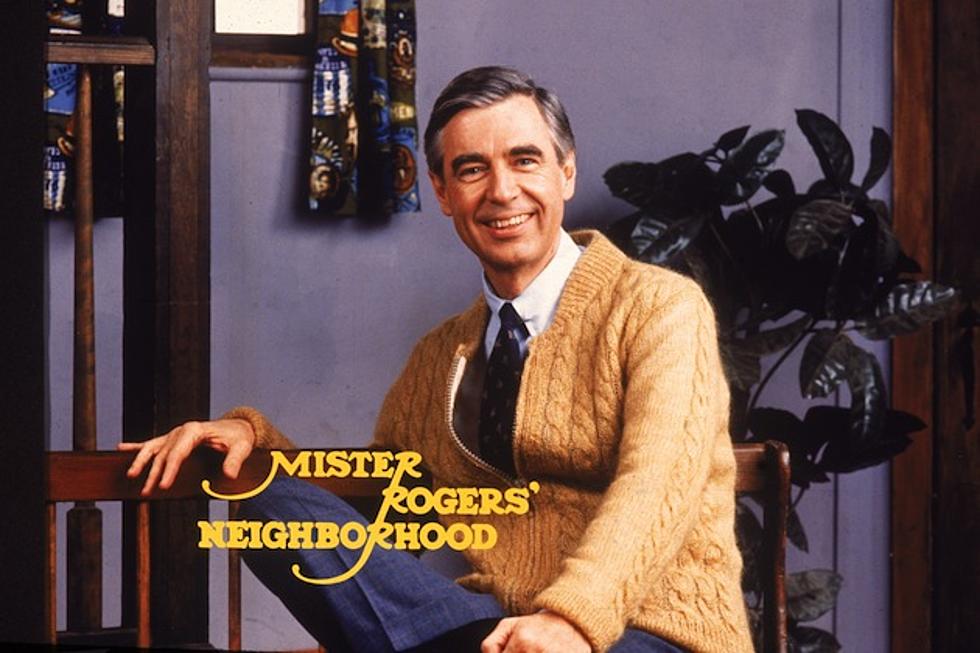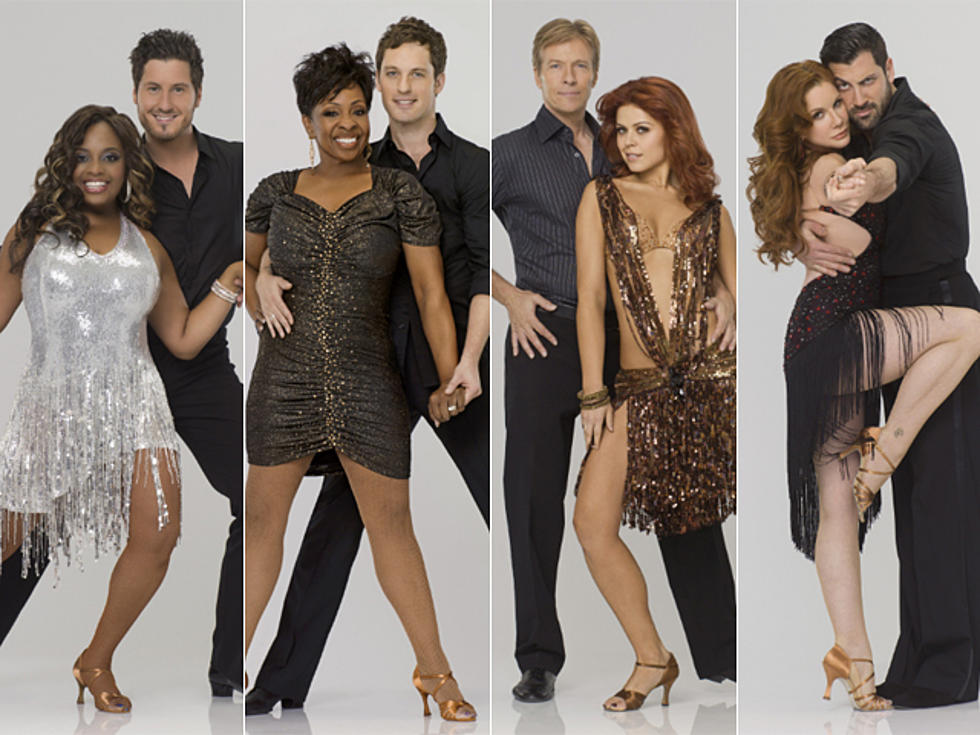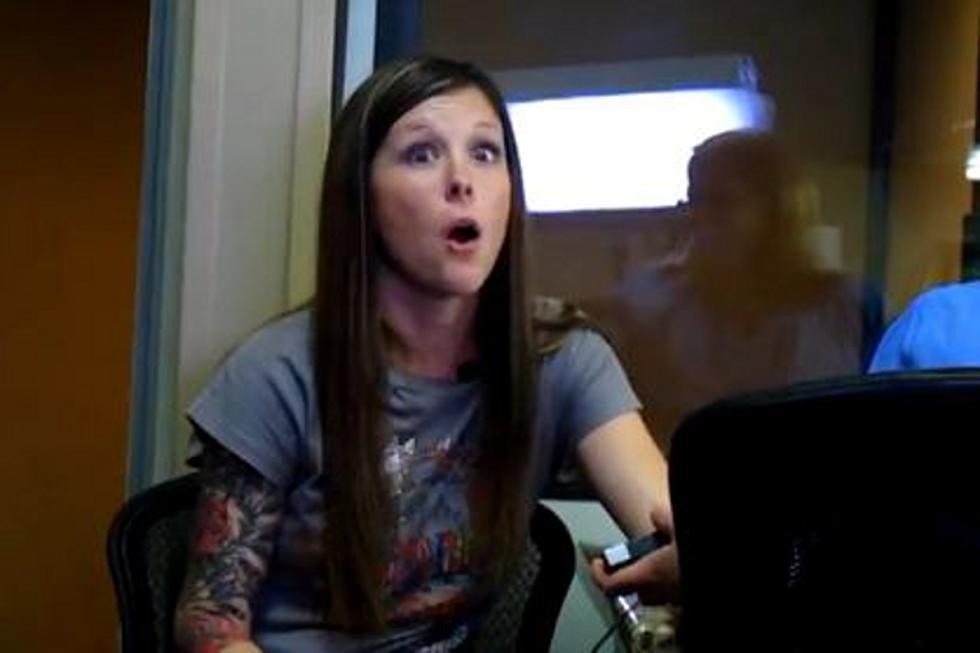
10 Things You Didn’t Know About ‘Mister Rogers’
It would be very hard to find someone who had a television in their house growing up and didn’t spend a big chunk of their childhood basking in the warm glow of Mr. Rogers’ beatific smile. Today we celebrate the great man’s birthday (he would’ve been 84) with a few things you might not know about his historic children’s TV show.
Fred Rogers’ work in television is more than just a quaintly nostalgic relic of a simpler time. ‘Mister Rogers’ Neighborhood’ was a staple of every young child’s growth, and a deep part of helping them understand a world that could seem totally foreign at times. It strived to be more than just a show to keep kids with short attention spans entertained– it spoke to children in ways that no other children’s show has since about everything from learning to tie their shoelaces to serious subjects like divorce. And unlike other kids’ shows that were focused more on selling sugary cereals or overpriced hunks of plastic, its host and creator was interested in improving a child’s development, not their attention, even as the medium itself was changing all around it.
So on “Won’t You Be My Neighbor Day,” we look back at TV’s most famous neighbor and the neighborhood he created. Take a look at a few things you might not know about Mister Rogers. (No, he wasn’t a Marine sniper. That’s an urban legend.)
1. Fred Rogers got into children’s television because he wanted to change it
Fred Rogers didn’t intend to make himself a famous face or even a part of children’s television. In fact, he had a great disdain for it. A native of Latrobe, PA, and a graduate of Rollins College in Winter Park, FL, Rogers actually earned his bachelor’s degree in musical composition and later a divinity degree from the Pittsburgh Theological Seminary. (He was an ordained Presbyterian minister throughout his life.) Just as he planned to enroll in divinity school, he noticed a kids’ show on TV, a relatively new medium at the time, featuring silly characters mindlessly hitting each other with pies. Rogers said he “hated it so” and thought, “Why do we have to show demeaning behavior?” and decided then and there to work in television.
2. He put himself on the air for his first show
Thanks to his musical background, Rogers was able to find work as a floor director with NBC on various variety shows until 1952, when the nation’s first community-funded TV station in Pittsburgh invited him to serve as its program director. The station needed a children’s program to put on the air, but when no one stepped forward, he stepped in and created one himself. ‘The Children’s Corner’ starred Josie Carey and Rogers, who handled all of the puppetry. Production values might have been low, but the response was overwhelmingly positive with the show earning national acclaim and even some awards. The puppet characters Rogers created for the show would eventually move to the Land of Make Believe.
3. He wore his trademark sneakers to cut down on noise on set
Since Rogers was in charge of every puppet on ‘The Children’s Corner,’ running from set to set in a pair of hard sole dress shoes on a hard floor could make a lot of noise on live television. After a few episodes, Rogers decided that a pair of sneakers would be much quieter, so he changed into them at the start of taping for every episode. The tradition carried over to ‘Mister Rogers’ Neighborhood,’ when he would change into his trademark sweaters and tennis shoes as he sang the show’s iconic opening theme.
4. When the show was about to be canceled, mothers went door-to-door to raise money to keep it on the air
Before making his debut on public television, Rogers finished his divinity degree in the early ’60s and moved to Canada where he created and hosted a 15-minute show for the Canadian Broadcasting Company called ‘Misterrogers.’ He eventually returned to Pittsburgh and took his show and its characters with him to the National Educational Television system and created what we now know as ‘Mister Rogers’ Neighborhood.’
Unfortunately, money was tight and the NET eventually ran out of money altogether, threatening Rogers’ creation from returning to the airwaves for another season. Rogers said in an interview that a group of mothers in Boston, MA, fought to keep the show from getting canceled by going door-to-door and asking for donations because they “felt it was essential to keep these shows on the air.”
Bill McCurdy, president of the Sears-Roebuck Foundation, read about the fundraising drive and decided to sponsor Rogers’ show, a relationship that would last more than 20 years. According to an interview with David Newell, the actor who played Mr. McFeely, Rogers wanted to thank McCurdy for his support by naming the delivery man on the show after him. But the name was eventually changed to Mr. McFeely (Rogers’ middle name) just 20 minutes before the character made its debut on the air because using the name of a sponsor seemed too “self-serving.”
5. The puppets in the Land of Make Believe are named after Rogers’ family and friends
Speaking of the show’s iconic characters, their names also served as a special tribute to the people in Rogers’ life. For instance, Queen Sara Saturday, the wife of King Friday XIII, shares a name with Rogers’ wife Sara. The school teacher Harriet Elizabeth Cow came from his aunt, Harriet Elizabeth Rogers. The cranky Lady Elaine Fairchilde came from the name of his adopted sister, Elaine. The most interesting name origin belongs to the meek and innocent Daniel Tiger, who will get his own animated spinoff series on PBS later this fall. While Rogers was developing ‘The Children’s Corner’ for WQED in Pittsburgh, the station’s general manager Dorothy Daniel gave him a tiger puppet to use and Rogers named it after her.
6. ‘Mister Rogers’ Neighborhood’ was horror director George Romero’s first film job
As Rogers’ show grew in popularity, local filmmakers would turn to him for work, supplying him with short films for his children’s show. Pittsburgh native and budding filmmaker George Romero was hired by Rogers to make films for his show, marking the start of his filmmaking career. (One of his shorts, which involved Mr. Rogers getting a tonsillectomy, inspired Romero to start making horror films.) Romero said he loved working for Rogers and called him “the sweetest man I ever knew.”
While he worked for the show, the zombie-meister also shot his iconic ‘Night of the Living Dead’ film and later its equally iconic sequel ‘Dawn of the Dead.’ In fact, Romero wanted to cast Betty Aberlin, the actress who played Lady Aberlin on ‘Mister Rogers’ Neighborhood,’ as the female lead in ‘Dawn of the Dead’ but Rogers declined. Romero noted that Rogers did see both films and praised his ghoulish work by saying that they were “a lot of fun.”
7. Mr. Rogers designed a theme park ride based on the Land of Make Believe
Thanks to a steady stream of donors and Sears-Roebuck’s sponsorship, ‘Mister Rogers’ Neighborhood’ was one of the least commercialized shows on PBS’ programming block. Still, it wasn’t completely above turning the show’s characters into other properties. The Idlewild Park in Ligonier, PA, features a life-size trolley just like the one on Rogers’ show. The replica trolley takes kids through the Land of Make Believe while animatronic puppets voiced by Rogers himself interact with guests. The ride opened in 1989 and cost $1 million in construction. Rogers even wrote the script for the park ride as a tribute to the theme park he went to as a child.
8. He helped beat MPAA president Jack Valenti in a landmark Supreme Court case that saved the VCR
Rogers’ work shaped television in many new and exciting ways, but many will be surprised to know that he also left his mark on the technology that drives it as well. Rogers testified in a landmark Supreme Court decision that paved new horizons for home recording technology, more specifically the VCR. Entertainment producers like Disney and Universal didn’t like the idea of people being able to record their favorite shows at home on a Betamax machine and a lawsuit filed by several major distributors almost pulled the machines off of shelves.
The case went before the Supreme Court in 1983, pitting the Sony Corporation against Universal Studios who were backed with the support of the Motion Picture Association of America. (Notorious MPAA head Jack Valenti called the ability to record TV shows “savagery.”) Rogers testified on Sony’s behalf, saying he had no objection to the taping of his shows because, “I just feel that anything that allows a person to be more active in the control of his or her life, in a healthy way, is important.” The Supreme Court ruled in Sony’s favor, and the case would later serve as precedents for similar technologies such as Napster, Grokster, Netflix and Hulu.
9. His only other acting credit was on ‘Dr. Quinn: Medicine Woman’
Rogers might have many TV credits on his resume, but they are all as himself, either as a guest appearance or in a clip of his kids’ show. His only true acting credit came in 1996 when he made a guest appearance on the CBS drama ‘Dr. Quinn: Medicine Woman’ as a reverend scheduled to visit the town’s church. The part came about after Mrs. Rogers met the show’s executive producer Beth Sullivan and mentioned that it was the only show on television that her husband liked to watch. Sullivan immediately asked if Rogers would like to appear on an episode.
10. He helped keep PBS in business
The threat of losing government funding has been looming over PBS’ head since President Lyndon Johnson helped bring it to life in 1967. In fact, just a few years later under President Richard Nixon, the budding network was in jeopardy of losing at least half of a $20 million federal grant. Rogers went to D.C. to testify before a Senate Subcommittee on Communications to help lay out the case for why shows like his were worth funding.
Rogers’ gentle demeanor offered an interesting contrast to the gruff Democratic Senator John Pastore, while his sincerity for helping children and improving our lives through positive, uplifting programming made Mr. Rogers a powerful force for quality public television. Rogers’ reciting of one of his trademark songs,’What Do You Do With The Mad That You Feel?,’ also prompted a surprising and heartfelt response from Pastore. (Even gruff senators couldn’t resist the wisdom of Mr. Rogers.) The Corporation for Public Broadcasting, and countless generations of children, have Fred Rogers to thank for showing them the power of being a good neighbor.
More From 107.9 Jack FM
![WWE ‘Monday Night Raw’ Recap – [3/19/11]](http://townsquare.media/site/103/files/2012/03/raw06.jpg?w=980&q=75)





![What Kind Of Cars Will We Be Driving If Gas Prices Keep Going UP! [PHOTOS]](http://townsquare.media/site/103/files/2012/03/smart-car-300x160.jpg?w=980&q=75)



